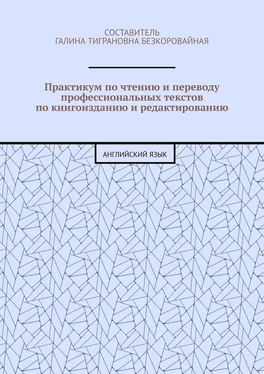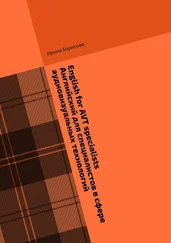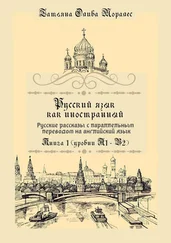Publishing houses are divided into book, book-magazine, and newspaper-magazine types, depending on their products. The nature of the publishing house is determined by the intended readership – scientific, popular, children, or youth; the subject matter of the publications determines the type of the publishing house – general-purpose or specialized.
The production of books intended for distribution was known in Rus’ as early as the turn of the 11th century. Books were copied by special scribes in monasteries and at princes’ courts and by professional artisans in the cities. In the 15th to the mid-16th century, the book business expanded in conjunction with the formation of the centralized Russian state, the development of handicrafts and trade, and the growth of cities and development of urban culture. Multivolume manuscript works, general Russian annals, and many other works appeared. In 1551, at the Stoglav (Hundred Chapters) Council, Ivan IV declared: «Scribes write from inaccurate translations, and having written, do not correct them… and in God’s churches people read, sing, and write from these books.» Printing was able to facilitate the establishment of uniformity in church books.
The first printed Slavic books using Cyrillic characters were published by Szwajpolt Fiol in Kraków at the end of the 15th century. At the beginning of the 16th century, the first Byelorussian printer, Frantsisk Skorin, organized book printing in Slavonic in Wilno (Vilnius).
3. Answer the following questions:
1. What is publishing?
2. What is the genesis of publishing houses associated with?
3. What are publishing houses divided into?
4. Who wrote books before the invention of printed press?
5. Where and when was the printing in Belorussia organized?
6. Who are the prominent figures in Russian printing era beginning?
4. Translate the following sentences into Russian:
1. The level, scope, and orientation of publishing are determined by the material, sociopolitical, and cultural conditions of a society.
2. J. Gutenberg’s invention of the European method of printing (mid-15th century) opened up a new era in the history of books; the printed word became an important factor in social development.
3. From the 18th through the mid-19th century, the process of forming publishing houses and their quantitative growth in all countries proceeded with increasing rapidity.
4. Taxes and duties were imposed upon publishing houses; they were punished by fines and shut down, and the owners of publishing enterprises and printing houses were brought to trial and given harsh sentences.
5. The process of specialization of publishing and typographic enterprises in the publishing business began in the mid-19th century, with the emergence of a new, strong technical base.
6. Books were copied by special scribes in monasteries and at princes’ courts and by professional artisans in the cities. In the 15th to the mid-16th century, the book business expanded in conjunction with the formation of the centralized Russian state, the development of handicrafts and trade, and the growth of cities and development of urban culture.
7. The nature of the publishing house is determined by the intended readership – scientific, popular, children, or youth; the subject matter of the publications determines the type of the publishing house – general-purpose or specialized.
5. Give the English equivalents from the text given above:
Отрасль культуры и производства; появление новой технической базы; быстро увеличивается; количественный рост; продажа и распространение книг; писцы; многотомные рукописи; увеличение выхода продукции; издательства делятся; наказывать штрафами и суровыми приговорами; развитие ручного труда; культура города; профессиональные мастера; распространиться в значительной степени.
6. Fill in the gaps with the words from the text:
1. The level, __________, and orientation of publishing are determined by the material, sociopolitical, and cultural __________ of a society.
2. The publishing house __________ as an enterprise for the production of printed matter in Europe in the 16th century.
3. Publishing was __________ upon special permission; books, journals, and newspapers were subject to strict __________.
4. Books were copied by special __________ in monasteries and at princes’ courts and by professional __________ in the cities. In the 15th to the mid-16th century
5. The first printed Slavic books using __________ characters were published by Szwajpolt Fiol in Kraków at the end of the 15th century.
7. Translate into English:
1. Издание печатных книг связано с появлением европейского метода печати.
2. Начиная с 18 века и до середины 19 проходил л процесс образования издательств и их быстрый количественный рост.
3. Функции и структура издательства становились все более сложными.
4. В 1551 года в книге Стоглав Иван Грозный писал: «Писцы переписывают книги из небрежных переводов… и не проверяют после написания, а в церквях люди читают, поют и пишут из этих книг»
5. Печать могла облегчить установление единообразия в церковных книгах.
6. В начале 16века первый белорусский печатник Франциск Скорина организовал книгопечатание в Вильно.
7. На издательские дома накладывали налоги и штрафы.
TEXT 2
1. Read and learn the following words and expressions:
1. scholarly – учебный, научный
2. responsibilities – обязанности
3. bound book – книга в переплете
4. to assume – предполагать, допускать
5. to contract – заключать договор
6. schedule – планировать, разрабатывать план
7. conversion – превращение
8. in the long run – в конечном итоге, в конце концов
9. primary – имеющий первоначальное значение
10. to apply – применять
11. applying the standards – применяя стандарты
12. guidelines – руководства
13. technical editing – техническое редактирование
14. adherence – строгое соблюдение
15. awkward – нескладный, нелепый
16. yearbook – ежегодное издание
17. page layout – компоновка страницы
18. font- вид шрифта
19. header – заголовок
20. to dedicate – предназначать
21. peer-edit – рецензируемое издание
22. dedicated – специализирующийся, специальный
23. punctuation – пунктуация
24. construction of tables – построение таблиц
Читать дальше












